Space Savers
Stifled by space or in this case, a lack thereof. There’s a good chance more than a few of your customers can attest that this obstacle of theirs is an area of opportunity of yours.
Maybe they’ve finally moved out of mom and dad’s basement into a low-light apartment of their own. Or maybe they’re empty-nesters who’ve traded in the four bedroom, three bath suburban retreat for a high-rise condo with a view of the lake.
No matter the scenario, more and more consumers are seeking solutions for gardening of a different, smaller sort. Here on out, the steps you take to help define their space can also help define your store as the expert for gardens of any size and shape.
Jason Loper, retail editor of the popular site www.ApartmentTherapy.com, doesn’t consider himself much of a gardener, but that doesn’t keep him from seeking a little greenery for his small Chicago apartment.
“I’ve had some great success with ferns and air plants,” Loper says. “The whole reason I bought the air plants in the first place was because they were grouped together with adorable glass vessels. And that’s how they got me grouping all the ingredients for a terrarium together was what it took to get me to jump on the trend.”
He adds that apartment dwellers like
himself need to get inspired when they visit
a garden center.
“I like seeing displays that incorporate unusual aspects pieces that are re-purposed or used in a way that they were not originally intended,” he says. “I think that creativity inspires more creativity. A display that is over-styled or complicated might turn off a customer who would think, ‘Oh, I could never do that at home.’ Whereas a display that seems easy and natural may inspire a customer to think, ‘I can do that!'”
Coming Up Tulips
To echo Loper’s sentiments, Amy Dube, Dig.Drop.Done’s flower bulb expert, agrees today’s small space gardeners need things to be equal parts simple and inspirational, especially when it comes to bulb gardening.
“Neatly and on wooden racks that how everyone displays their bulb assortment,” Dube says. “Try a different approach by targeting those in loft spaces or with a porch or balcony. Bulbs aren’t just for city parks, but for patios and windowsills and planters.”
To arouse new interest in your bulb section, Dube suggests completely changing the way bulbs are displayed.
“When people see the same thing over and over again, they tend not to look at it anymore,” she says. “Create a small footprint in the store that resembles a space they might be comfortable with. Bring in an outdoor rug, fill an old armoire with bulbs, show off bulbs and herbs together in a hanging shoe rack, plant up old rain boots introduce them to creativity.
“People have dinner parties and they like to go into the garden to clip their own herbs. Well, why can’t they also clip their own tulips or dahlias for their centerpiece? We need to show them how it all works together and keep it at home.”
Dube says those new to bulbs always want to know where bulbs should be grown, and while we can tell them just about anywhere, we should show them what “anywhere” can actually mean.
Gardens of Your Fantasy
Speaking of small footprints, most retailers are no longer strangers to the popularity and versatility of miniature gardens.
Well before it was trending, Sheryl Lozier of Summers Past Farms in Flinn Springs, Calif., started selling and teaching all things fairy gardening in 2000 for one reason to introduce children to gardening.
“We’re a 5-acre herb farm that’s big on classes,” Lozier says. “We wanted to show kids it’s fun to dig in the dirt; and we wanted to introduce them to the responsibility of having a container. Fairy gardening was a great way to do both.”
In 2001, Lozier and her Summers Past Farms team held the Fairy Festival on the first Saturday in June. It was an instant and huge success. On average, the annual event continues to draw 1,000 attendees, which includes a cast of real-life Disney princesses from the Make-A-Wish Foundation.
With little in the way of local advertising, Lozier credits the growth of her popular event to her classes and also the fairy garden competition held during the event.
“The competition has proven to be a great source of inspiration for people at our event, but really, it started with our hands-on classes,” Lozier says. “We take the time to learn the flower’s lore. With all the fairy gardening books out there, the hard work is already done for us. It’s our direction to keep it alive and pass it onto the kids during our classes to get them looking and reading and thinking.”
The fee to attend one of Summers Past Farms’ classes will typically run $40 and include a bowl, soil, a predetermined amount plants and instruction. A fairy is not included in the class’ kit.
“We didn’t want the parents to feel like everything needed to be purchased on day one,” Lozier explains. “We teach them to make a garden where a fairy most likely would want to live. We wanted to leave it open and say, you’re making a garden for a fairy and some day a fairy will arrive in your garden. This also encourages them to return and add more accessories, but at their own pace.”
This retailer also has its own miniature gardens on display “poked strategically” throughout the landscape. This way visitors will stumble across them a few times, rather than just once in the miniature
gardening department.
And as they are worked into the landscape, Lozier says customers are reminded that fairy gardens will fit in just about any location and they will see how well the gardens add charm to the overall landscape.
Bite-Sized Planters
While bulb and miniature gardens are perfect for just about any nook and cranny, maybe your customer is looking for a little more flavor literally.
No problem, says Amelie Aust, Fall Creek Nursery’s new business manager. Like her company’s new BrazelBerries line, there are new ornamental berry plants bred just for people short on greenspace but big on berries.
“The more we pay attention to the people who are buying berries in the grocery stores, the more we realize the opportunities to connect with them in the garden center are not that far apart,” Aust says. “We’ve always thought of them as totally separate businesses, totally separate consumers.
“What we’re seeing is berries are the fastest growing category in the grocery store.” Aust adds that it is the most profitable category as well, with the most profitable berry being the blueberry. People who buy berries tend to buy them often.
Aust says consumers are buying berries for three reasons taste, health and price. She referenced a national survey from last spring that showed 17 percent of those who participated in the survey bought berries at least once a week. And the outlier from the results was that 27 percent of the
24-and-under age group bought them weekly.
Aust poses the question: How can garden centers tap into this if so many people are incorporating berries into their lifestyle?
“Create another lifestyle opportunity for a lifestyle they are already choosing,” she says. “Small space berry gardening is a huge opportunity for retailers. Many (consumers) who tap into this
don’t even consider themselves gardeners yet.”
Many people visiting garden centers are very familiar with berries, she says, and they already brand themselves as berry eaters. “Now, all we have to do is connect the dots. Show them the opportunity, no matter what size of space they have.”
Here are Aust’s three keys to retail success with small space berry gardening:
1. “There’s a variety revolution going on,” she says, with new berries being bred just for small space gardening. “It’s simple. Give people access to these simple, beautiful and delicious plants.”
There’s no more wrestling with thorny, unruly plants, she says. Now, people can have three or four years of prolific blueberries and raspberries and all they need is a big pot and some good soil.
2. “When I think of small spaces, I think about decorating,” Aust says. “So I’ll grab a Pottery Barn catalog or I’ll look at the Better Homes & Gardens website. I want pictures, I want inspiration something to emulate. Pictures say so much more than words ever could.”
3. There’s a misconception many consumers have: growing fruit can be intimidating or complicated.
“It can be so simple,” Aust says. “We’ve got to take the mystique away. Like our BrazelBerries, varieties are being bred to be as simple as possible. If you want to get creative, you can, but you don’t have to. Focus on simple.”
Mike Hylton at Shorty’s Garden + Home in Vancouver, Wash., was one of the first retailers last summer to sell the BrazelBerries line.
“We got them in after the selling season was over (beginning of July) and they sold really well,” Hylton says. “We had a decent spring and then sales plummeted. I brought in 120 of them and we sold all 120 in 10 days while we weren’t selling anything else that time of year.”
The Shorty’s staff kept the BrazelBerries completely separate from other green goods. “We touted them as patio edible hors d’oeuvres,” he says. “We’ve potted a few of them up in ceramic pots and made signage that read: ‘All you need to do is provide the ice cream.’ I think these small space berry plants will be easier for retailers to tout as something special at an off time of the year.”
Aust agrees with Hylton that separating these plants from other traditional berry plants and fruit trees is a great idea.
“If you put the blueberries next to the blueberries next to the blueberries, well, one might have interesting leaves,” she explains. “But if you’re trying to focus on small space or landscape gardening, think about traditional plants customers would purchase to accomplish their gardening purpose, and put these (patio-friendly berry plants) there to communicate an alternative solution. All of a sudden the value proposition takes care of itself.”

As consumers continue to struggle with busier schedules, smaller spaces and brown thumbs, we look at three possible solutions bulbs, berries and fairies.







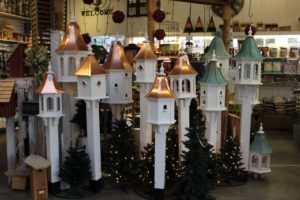
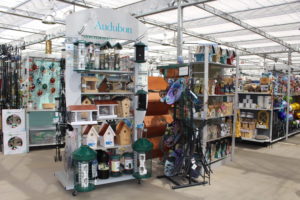
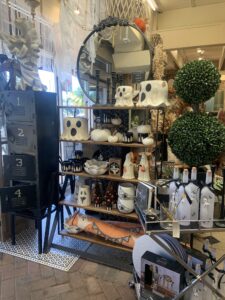
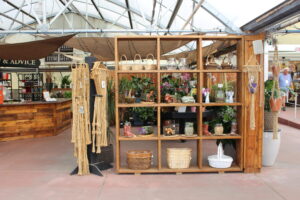

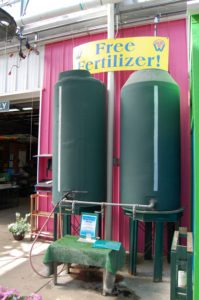
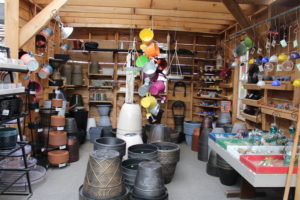
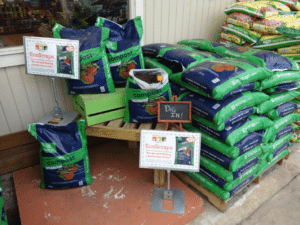

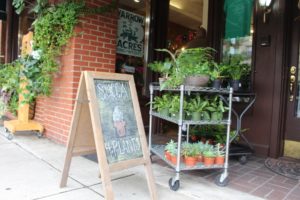
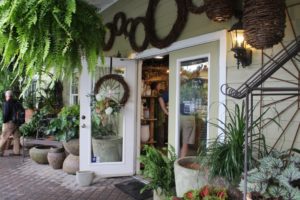
 Videos
Videos





